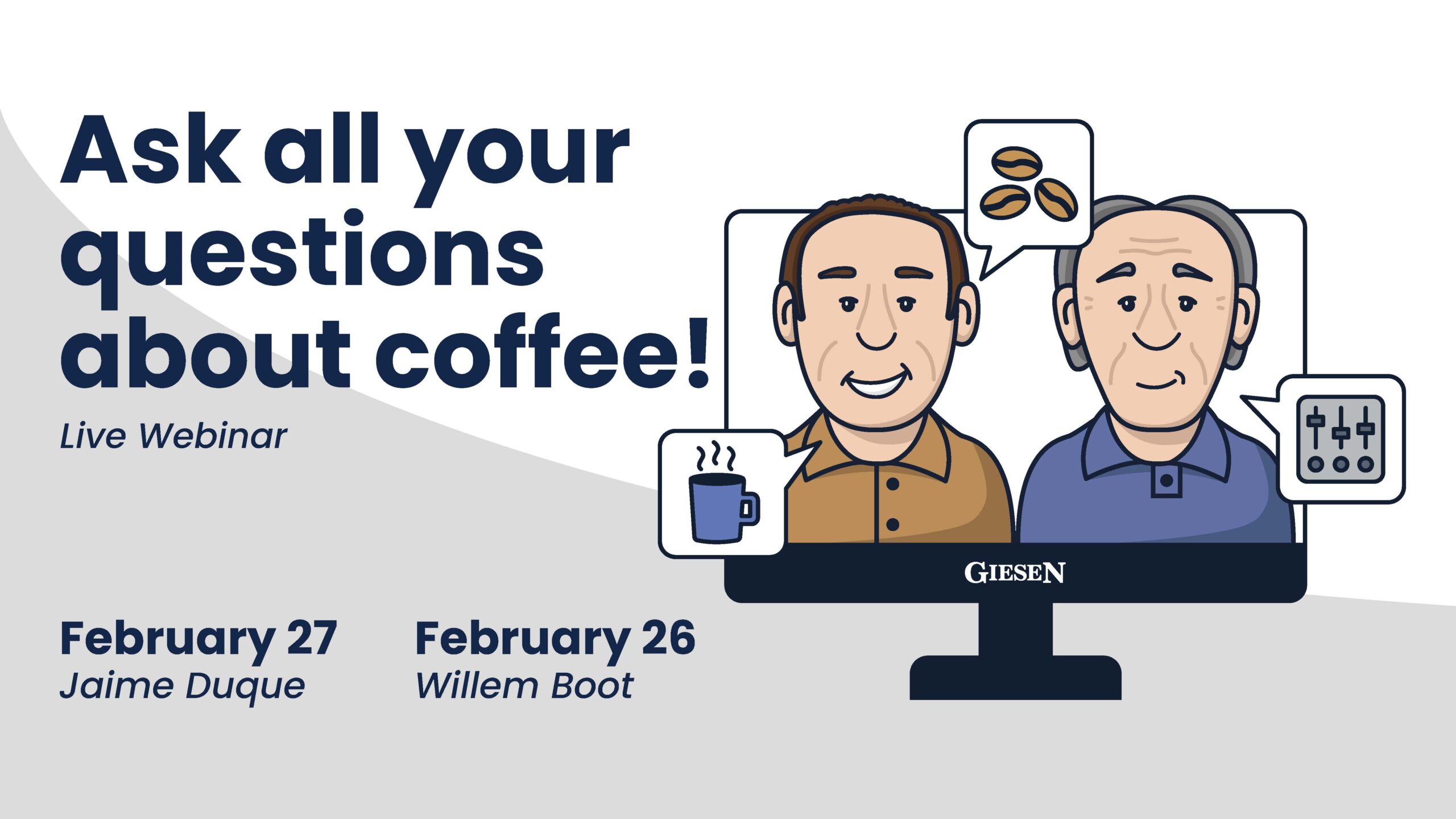Besides relying on your powerful roasting software, it’s very important you take a look at what kind of beans you have. This way, you can strategize the roast profile to the best. In this Webinar, Willem Boots tells you everything about it.
The topics of this webinar are:
– Profiling tips for different bean types
– How to balance sweetness and acidity
Reading your coffee beans
The Giesen profiler is a really powerful software tool. It will tell you what is going on using indicators as bean temperature, rate of rise, and air pressure. Nowadays, there are enough reasons for roasters to rely on these digital tools and instruments. There is less and less reason to really look at what’s going on with the beans during roasting or to assess the beans during roasting. I want to emphasize the importance of doing your measurements. Moisture, dentate, but also the overall question; what kind of beans am I dealing with? What kind of coffee beans do I have and how can I strategize my roast profile for this?
If you don’t have the resource to pertest a sample roaster, you really rely on reading your coffee beans to strategies for profiling.
Using simple tools
First, it’s important to get as much data about the beans as possible from your importer. Besides that, you can tell a lot about the coffee by using really simple tools. For example, use your nose to smell the green beans. Visually, how do you assess the color of the beans? So, with that, you can tell a lot about the green coffee going into the roaster. And then as a roastmaster, when you are standing beside your roasting machine, all the extra digital data is great to have.
Roast phases
In my early days of roasting my vintage roasting machine did not have and measurement tools built in. I was thought by my dad to focus not only on the temperature of the beans, but also in combination with the settings of my roaster. When you make certain changes, you need to log the changes you see in you roast. What impact does it make on roast development? This way you lean how to look for specific developments in your roast. So, use sensor tools to get a good idea of the kind of coffee you are dealing with; fresh crop? Older crop? And do a visual inspection of your beans.
For consistency, you have to be able to recognize the Maillard reaction. You can’t just base it on what the bean temperature is telling you. We saw how different the temperature was during yellowing or the indication that Maillard is on the way. you have to look at the coffee and be like; yellow is yellow, there is no more green in it. Or by smelling it and recognizing the smell of dry hay and not green and grassy. It’s really hard for me to imagine how you recognize these milestones without the actual coffee right in front of you.
Maillard reaction
At 285 degrees Fahrenheit / 140 degrees Celsius – This is the stage where chemical reactions start to become very interesting. Allowing suffusion time for the Maillard reactions start to unfold, will really help with the flavor profile of the coffee. This contributes to the mouthfeel and sweetness as well.

Caramelization
At 355 degrees Fahrenheit / 179 degrees Celsius – This is not too long before the first crack starts to appear. using your trial, looking at your beans, and not getting obsessed that your bean temperature might show a little flick allows you to get the information about your coffee.
First crack
When the first crack starts and continues, the heat starts to escape the beans. The beans start to expand more. This is a critical phase in the development of coffee. Sometimes, you cannot even hear the first crack because of the noisy environment. And some beans don’t even allow the first crack to be heard. For some reason, they don’t pop as clearly as other beans do. Therefore, it is very important you can recognize that the first crack is taking place.
More information on roast profiling for new and specific bean types? Check out the webinar video!
Check out the other Giesen blog articles and webinar summaries here.




